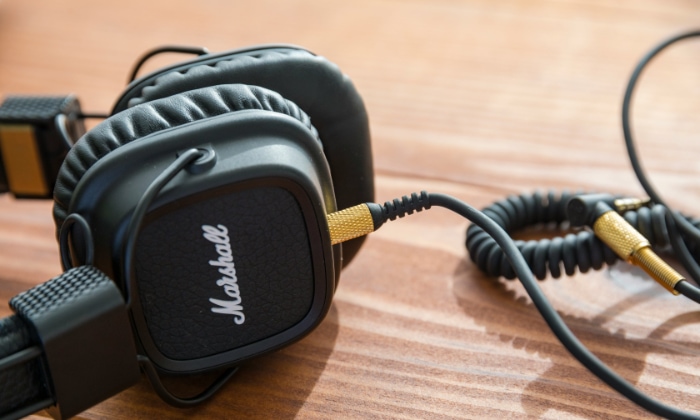FLAC vs. WAV: From Audiophiles to Casual Listeners

Audio quality significantly influences our listening experience, shaping our emotions and reactions to music and soundscapes. With the advancement of technology, two formats have emerged as frontrunners in the quest for pristine sound: FLAC and WAV. These contenders offer distinct paths to audio perfection, balancing file size and fidelity to meet the demands of audiophiles and professionals.
FLAC Unpacked
FLAC, short for Free Lossless Audio Codec, represents a remarkable advancement in audio compression technology. It’s designed to compress audio files without losing any quality, making it a favorite among audiophiles and those who prioritize sound fidelity.
FLAC and Its Lossless Compression Characteristics
FLAC compresses audio in a way that the original audio information can be perfectly reconstructed from the compressed data. Unlike lossy formats, which eliminate parts of the audio to reduce size, FLAC retains every detail, ensuring the audio is reproduced exactly as it was before compression.
The Technology Behind FLAC
The magic of FLAC’s compression lies in its ability to analyze audio data and identify patterns that can be efficiently re-encoded. This process reduces the file size without discarding any sound information.
FLAC uses a combination of advanced techniques such as predictive coding and entropy coding to achieve high compression rates.
Benefits of Using FLAC
One of the major advantages of FLAC is its ability to reduce file size without compromising sound quality. This makes it an excellent choice for storing large music collections or for streaming high-quality audio where bandwidth might be a concern.
FLAC files are also widely supported by a range of software and devices, offering flexibility in how and where you listen to your music.
Potential Drawbacks
Despite its many benefits, FLAC is not without its challenges. Some older devices and audio software may not support the FLAC format, leading to compatibility issues.
Additionally, while the file sizes are smaller than uncompressed formats like WAV, FLAC files are still larger than their lossy counterparts, which may be a consideration for those with limited storage space.
The Essence of WAV
WAV stands as a benchmark for audio formats, offering uncompressed audio files. This means the audio is stored in its purest form, without losing any data for the sake of reducing file size.
The journey of WAV began as an initiative to standardize audio file formats, making it easier to store and play high-quality sound on computers. Its development and standardization have made it a reliable format for professional and casual use alike.
Advantages
WAV’s major draw is its unparalleled audio quality and broad compatibility. Its fidelity is unmatched, making it the preferred choice for audio professionals and enthusiasts who prioritize purity of sound.
Moreover, its wide acceptance across devices and software ensures your audio plays smoothly, anywhere and anytime.
Disadvantages
However, WAV’s commitment to high fidelity comes with a cost—file size. WAV files are substantially larger than many other audio formats, which can strain storage solutions, from hard drives to cloud services.
This makes managing a large collection of WAV files a significant consideration for users.
Sound Quality Comparison

Both FLAC and WAV aim to deliver the highest possible sound quality, but they approach this goal differently. FLAC compresses audio without losing quality, while WAV offers audio in its purest, uncompressed form.
The technical merits of each format play a significant role in their sound quality, including factors like bitrate and sampling rate.
Breaking Down the Technicalities
Bitrate and sampling rate are crucial in determining audio quality. Bitrate refers to the amount of data processed over a certain time period, affecting the richness and depth of the sound.
Sampling rate, on the other hand, defines how often the audio signal is sampled per second, influencing the audio’s clarity and detail. Both FLAC and WAV can support high bitrates and sampling rates, but the uncompressed nature of WAV files often leads to larger file sizes for the same audio quality.
The Subjective Side of Sound
Despite the technical comparisons, the subjective listening experience can vary. Some listeners swear by the warmth and depth of WAV files, while others find FLAC’s quality indistinguishable from WAV, especially in casual listening environments.
The ability to discern differences often depends on the listener’s audio equipment and sensitivity to sound nuances.
Usage Scenarios
FLAC shines in situations where balancing high-quality audio with efficient storage is paramount. Its lossless compression makes it an excellent choice for music enthusiasts who demand pristine sound without consuming excessive disk space.
For those streaming music in high-fidelity or building a digital music library, FLAC provides an optimal blend of clarity and conservation.
WAV files are the gold standard in professional audio settings, including recording studios, sound design, and audio editing. The uncompressed format ensures every detail of the sound is preserved, making it indispensable for tasks that require precise editing and mixing.
Furthermore, WAV’s universal compatibility with audio editing software and hardware renders it a safe choice for projects that demand the highest fidelity and broadest support.
Making Your Choice: FLAC or WAV?
Deciding between FLAC and WAV boils down to considering storage capacity, audio quality requirements, and device compatibility. If storage space is limited but quality cannot be compromised, FLAC offers an efficient solution.
However, for audio production and editing where the integrity of every sound wave is critical, WAV stands unmatched. Additionally, compatibility with your playback and editing devices should influence your decision, ensuring seamless integration with your existing technology ecosystem.
Converting Between FLAC and WAV
Converting audio files from FLAC to WAV and vice versa is straightforward with the right software. Numerous free and paid applications are available that can handle these conversions without compromising audio quality.
Audacity, a free, open-source software, and dBpoweramp, a paid option with extensive format support, are popular choices. These tools often offer batch conversion capabilities, making it easier to process multiple files at once.
Key Considerations During Conversion
Maintaining the original audio quality is paramount when converting between formats. While converting from FLAC to WAV generally preserves audio integrity due to the lossless nature of both formats, attention must be paid to metadata.
Metadata, which includes information like artist name, album title, and track number, may not always transfer seamlessly between formats. It’s also worth being cautious of potential issues such as software compatibility or errors during the conversion process.
Managing an Audio Library in Multiple Formats
For those with audio libraries containing a mix of FLAC and WAV files, a few practical tips can streamline management and playback. Organizing files in clearly labeled folders by format, artist, or genre can help maintain order.
Using music library software that supports multiple formats can also simplify access and playback. Regularly backing up your library ensures that your collection is safeguarded against data loss.
Conclusion
FLAC stands out for its lossless compression, offering high-quality audio in a more manageable file size, making it an excellent choice for those keen on balancing fidelity with storage efficiency. On the other hand, WAV files, with their uncompressed purity, cater to the needs of audio professionals and enthusiasts who demand the highest sound quality, regardless of file size.
The choice between FLAC and WAV hinges on a blend of personal preference, practicality, and the specific demands of one’s audio projects. For everyday listening and efficient storage, FLAC might be the way to go.
Yet, for those involved in music production or in need of the utmost audio fidelity, WAV remains unrivaled.
We encourage an experimental approach to these formats. By engaging with both, users can develop a keen sense of what suits their listening habits, storage capabilities, and quality expectations.
The journey through audio formats is not just about technicalities but about enriching our auditory experiences and tailoring them to our lives. Experimentation leads to discovery, and in the realm of FLAC and WAV, there’s plenty to explore and enjoy.


